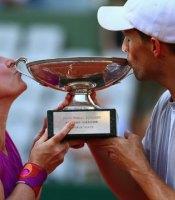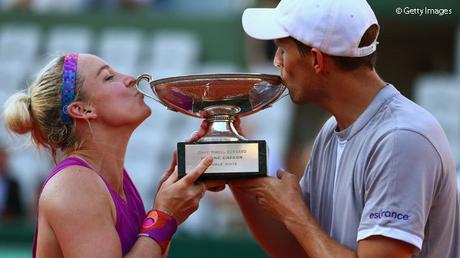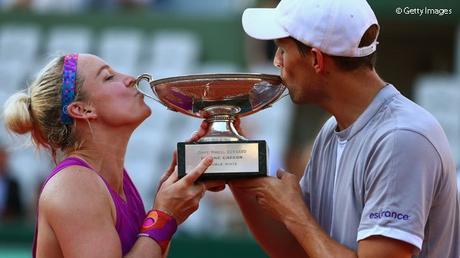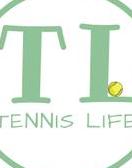


I’m a very competitive player, and I give my all on the court because, well… I want to win. But that doesn’t mean I don’t play for fun, because I do. It IS fun. But what’s the fun in losing?
Over the years, I’ve learned that playing tennis isn’t just about players hitting a fuzzy yellow ball back and forth over a net until someone misses it. It’s about skill AND strategy.
This post details actual strategies you can use to create and control points – and most importantly, WIN them! Sure, these may seem pretty basic, but in the heat of the moment, it’s hard to think of even the simple stuff unless you’ve really learned it, and practiced it. And one more thing – COMMUNICATION WITH YOUR PARTNER IS KEY, because these strategies WILL NOT WORK if only one of you knows what’s going on.
Pick on the weak link.
In every doubles team, there is usually a weaker player, one who has weaker ground strokes, or is more timid at the net, etc., and you should be able to spot them during your warm-up. My doubles partner and I don’t play tennis to lose, and friend or foe, we will pick on the weak link, attacking her weak serve/second serve and hitting to her as much as possible. This two-on-one action is guaranteed to frustrate both opponents into making more errors.
Get in to the net.
In doubles, the team that controls the net, more often than not, controls the match, so you and your partner must always be working towards that goal. You might be able to do it right away in your smashing return of their weak second serve, or their weak return of your powerful serve. Or it could take a mini rally until you get that one short ball to come in on. Whatever the case may be, get up to the net as often as possible. Now, I’m not saying come in on every ball, just those which your opponent struggled to return, and “soft” balls which land inside the service box. And if you DO come in when playing against lobbers, make sure and hit the ball as deep as possible, and then come in, but NOT ALL THE WAY. Your deep return will keep them at the baseline or beyond and (hopefully) force them to hit shorter lobs, and because you aren’t all the way in, you’ll be in a good position (you might have to take just a small step or two) to put them away.
Go down the middle.
Hitting to the middle is often the safest shot because it’s over the lowest part of the net. This will also cause a little confusion for your opponents, because by the time they decide who’ll take the shot, the point will be over – and in your favor. Do this a few times and it will mess with your opponent’s mental game as well.
Aim for their feet.
Unless they take (or have taken) tennis lessons on a regular basis, recreational tennis players don’t bend their knees to get a low ball. They’ll bend from the waist and hit a poor shot. Or they’ll reach down with their racket while remaining upright and hit an awkward return – usually a pop up ball. Make them pay for their laziness!
Lob.
If you’re playing a team that likes to come in to the net, lob every time they both come in to the net, and make at least one of them go back. This will open up the court on one side and leave your opponents vulnerable for angled put-aways. And if you feel like toying with them, you can purposefully hit short shots to bring them in just so you can lob them. While many players can run down lobs, they can’t do it for an entire match. And like the shot down the middle, it can get confusing for teams to decide who is going to get the lob and how to do “the switch”. Even players who move well can get frustrated with this tactic, and more often than not will make the errors.
Push.
I prefer balls with pace, as do most players who are 3.5 and above. So you should take advantage of players (like me) and hit soft, mid-court shots, forcing them to generate their own pace and hit from “no-man’s land”, often resulting in balls that go long.
Right now (off-season) is the best time to pick up a few pointers and practice them, so that by the time tennis season rolls around, you’ll be ready to kick tennis boo-tay! If you know these strategies AND communicate with your partner, you will definitely win more matches!
Be sure and share this post with your tennis partner(s), and check out our other instruction videos and strategy hacks for more helpful tips!

